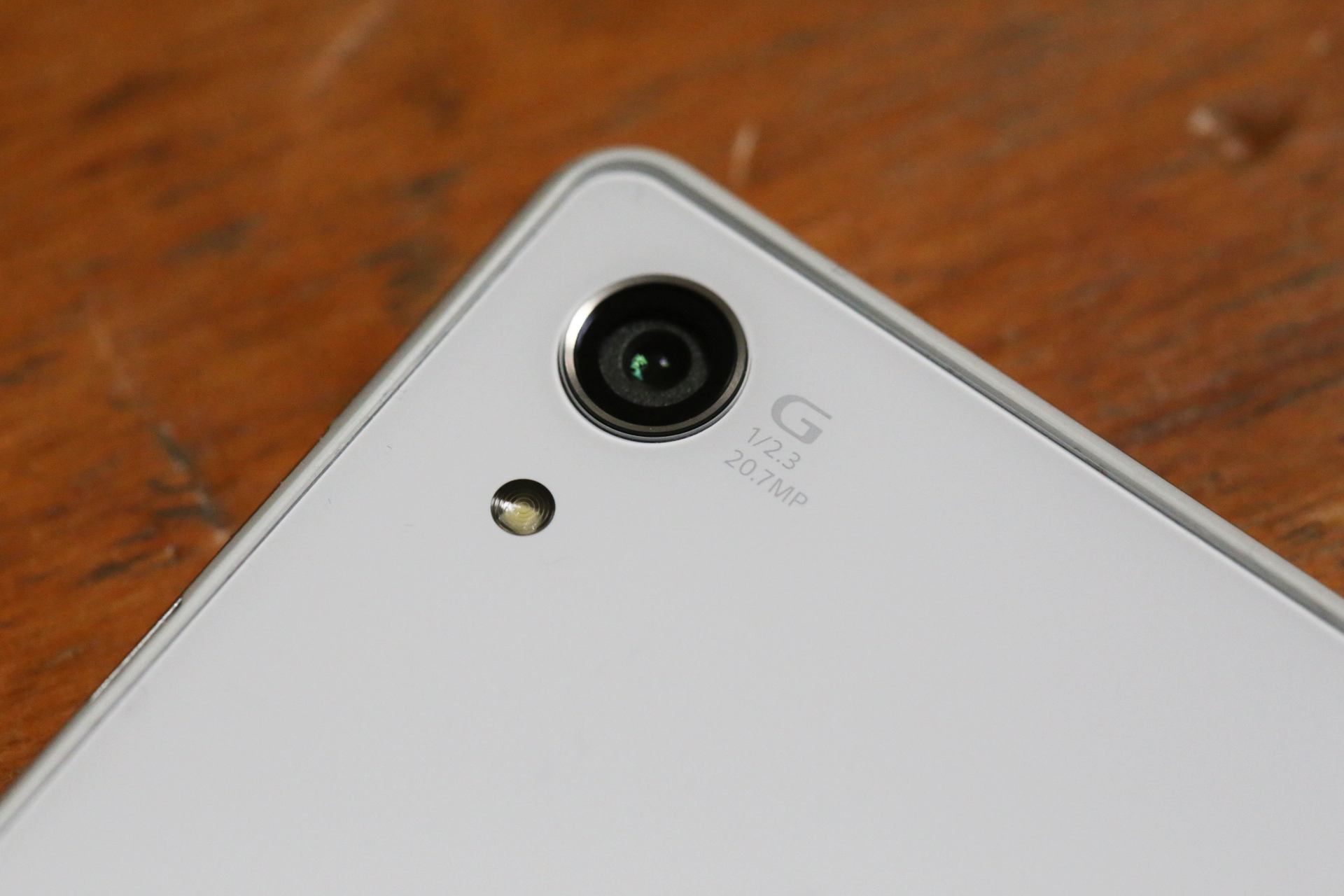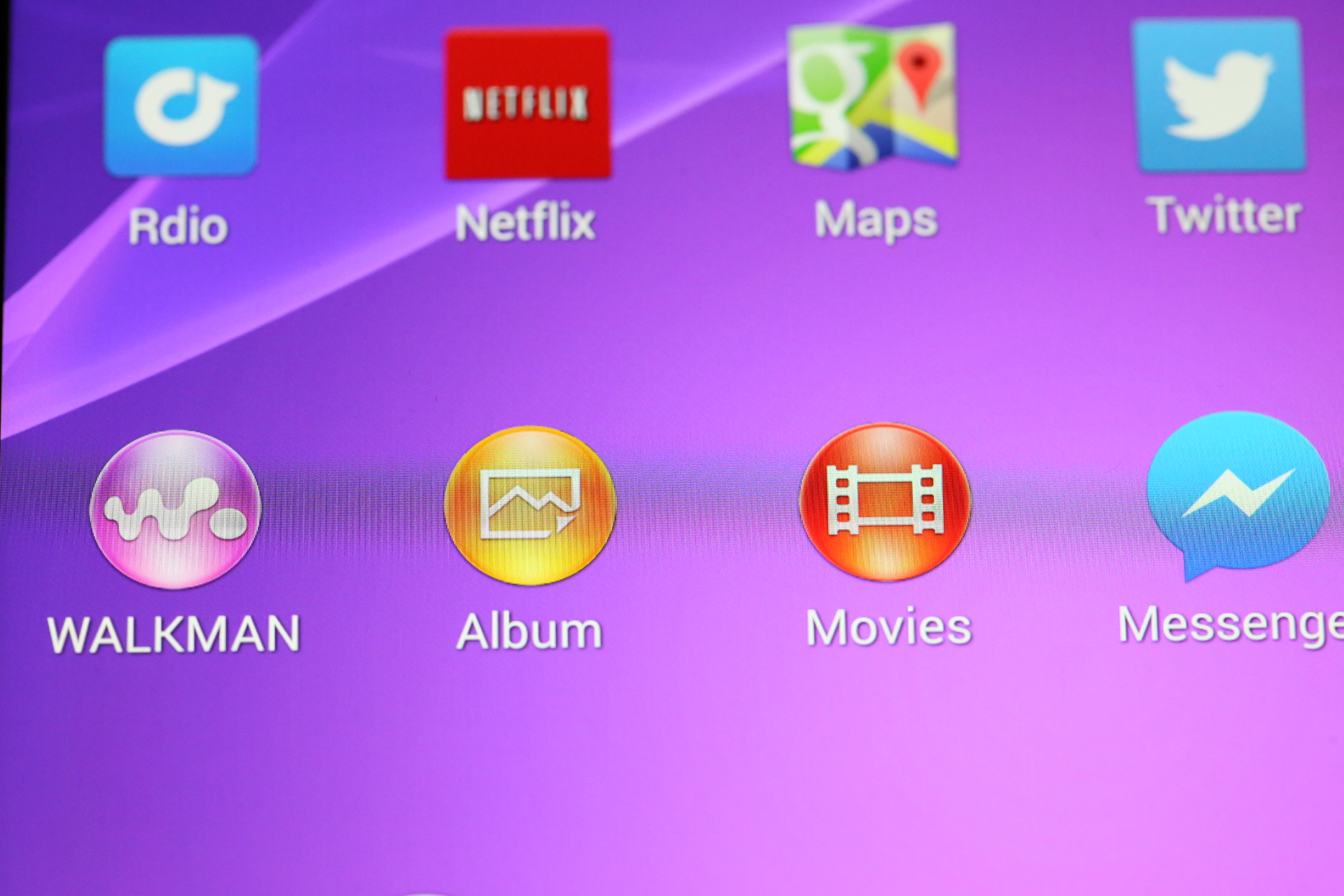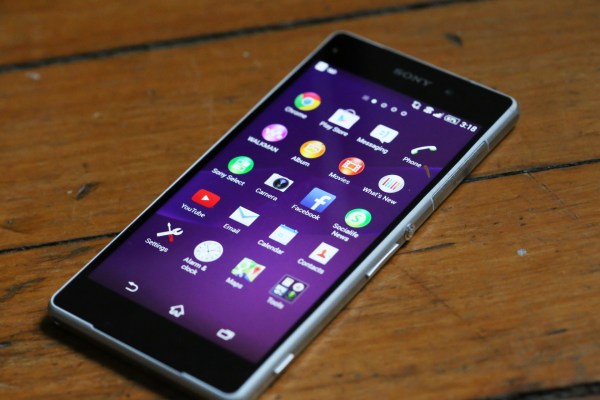Sony hasn’t had a great time of it in the U.S. smartphone market over the past few years, and it recently announced that its new flagship, the Xperia Z2, would only be made available to U.S. customers unlocked via its website. But the Z2 is still a solid device, and a contender on more or less even footing with flagships from other Android OEMs, so fans of Google’s mobile operating system ignore it at their own risk.
Video Review
Basics
- 5.2-inch 1920×1080 display
- 2.3GHz Qualcom quad-core processor
- 20.7 megapixel rear camera with 4K video capture
- 2.2 megapixel 1080p front camera
- LTE, 802.11ac Wi-Fi
- Android 4.4
- Waterproof and dust-resistant
- 19 hours talk time battery life
- MSRP: Likely around $600 off-contract
- Product info page
Pros
- Waterproof (not just water-resistant)
- Camera is top-notch
Cons
- Huge phone
- Sony services built in on stock elements like Google Now
Design
Sony’s industrial design with its smartphone line has had some trouble finding its footing, but the strong right angles on the rectangular slab finally seem comfortable in their own skin. The Z2 resembled the Z1s (which is available in the U.S. on T-Mobile) in terms of outward looks, but adds some refinements like a slimmer bezel and matte edge that bump up its visual appeal. Even the repositioned notification LED adds some charm, making this a visually attractive device, albeit one that might not agree with all tastes.
[gallery ids="994855,994854,994860,994858,994859,994857,994851,994850,994852,994853"]
The phone’s sharp angles make for a visually striking contrast to the rounded rectangles that make up the vast majority of Android handsets, but that also means it might come across as uncomfortable in the hand, especially if you happen to have smaller mitts. Mine are fairly large, and I still mostly felt more comfortable using the Z2 two-handed in most scenarios.
Even so, it’s a bold design that uses premium materials (scratch resistant glass front and back) and highlights the display, which is one of the Z2’s big selling points. And despite the size, the phone isn’t overly heavy. If you’re looking for a phablet-style phone, you could do much worse than the Z2 , and unlike with others, I’m not at all embarrassed to be seen with this one in public.
Features
The Z2 is a top-performer, like other Android devices using Qualcomm’s most recent quad-core processors, and it runs KitKat, too. Discerning between flagship Android devices based on performance has become basically a zero sum game, especially for general usage. The bottom line is that if you’re spending $600 unlocked, you’ll get a phone that renders web pages well and plays back almost all types of media without issue.
Sony, like other device makers, looks to differentiate itself not based on hardware performance but based on software features, and the Z2 has a healthy range of those. Some are good, some are annoying, but that also is not something that can be said exclusively about Sony. On balance, though Sony manages to add a lot of value to its devices, without altering the basic Android experience too much.
PlayStation Mobile support, for instance, is a big value add for gamers, and makes it possible to use PS3 controllers with the Z2 to play PlayStation Network titles optimized for Sony’s Android devices. You can output to your PC for essentially a pocket console experience, too, without the need for any cumbersome additional hardware, and with access to titles that aren’t available anywhere else.
On the other hand, Sony has decided to horn in on some sacred Android territory; calling up Google Now with a long press on the virtual home button works as expected, but also presents you with a second bubble for Sony’s “What’s New” portal, which is essentially a full screen ad for its own digital media content offerings. I realize that Sony wants to push its media on its own devices, but this isn’t the place to house that. A home screen widget installed by default (but removable) is one thing, a permanent fixture that shares space with Google Now is another.
Battery life is strong on the Z2, with ample standby power reserves. In actual use, it drains quickly when viewing video, but for general use, I was impressed, and managed to eke out multiple days even without being too conservative.
Camera

Another area where Sony has genuinely added value, however, is the camera and its software. Google has opted to go simple with its own native Android camera app, but Sony clearly wants users to get the most out of their impressive camera tech. On the Z2, Sony continues its tradition of including a number of filters and different camera modes provided by itself and third-parties, with options to download more, and more of these effects can now be applied to video, too.
Some highlights include the background defocusing software, which has become de rigueur on Android phones, and the 4K video recording mode. The phone itself doesn’t support 4K playback, but capturing at that resolution means you can zoom with relatively little loss, and your home videos will be future compatible with 4K TVs. Another neat feature offers high-speed video capture which you can slow down as you want, making it a strong competitor to Apple’s iPhone 5s slo-mo mode in this regard.
[gallery ids="994989,994991,994992,994993,994994"]
Photos and videos captured by the Z2 look fantastic, especially on the screen of the Z2 itself, which is designed to improve the look of visual media. It’s a strong consider for the single best Android camera currently available in a smartphone, and Sony’s strong credentials as an imaging company in its own right really shine here. Sony tries to explain this with a lot of buzzwords in its marketing material, but the results speak for themselves, and that’s all the average user cares about.
Display

The screen on the Z2 is an IPS display, finally, and it really helps improve the quality vs. previous Sony devices, including the Z1s, which debuted earlier this year and is otherwise quite similar to the Z2. This screen looks a lot better, however, thanks in part to the use of IPS and to the smaller bezel that frames the 5.2-inch screen.
Its large size mean it doesn’t have quite the pixel density of competitors like the HTC One (M8), but no one with standard human eyes would notice a perceptible difference in its ability to render text crisply anyway.
Combined with the top-notch camera, the display makes this a top choice device for users who prize their AV capture and consumption abilities above all else. One weird thing I’ve noticed on this and previous “waterproof” Sony devices, however – the display seems to be triggered by rainfall or splashed water in weird ways, making the phone act as if touch or other input is being detected when none is being applied. The phone does indeed still work after exposure to water, including submersion and torrential downfalls, however, and that’s what really counts.
Bottom Line
Sony’s camera is a very solid Android flagship, and a device that makes it easy to pine for the electronics maker to return in earnest to the U.S. market with a full-court press. Here in Canada, the device can be bought on Bell’s network, and in other parts of the world similar carrier subsidies are available. Sony diehards will at least get the chance to pay up for an unlocked device come summer, but our testing reveals no real reason why the Z2 shouldn’t have a chance to go head to head with The Galaxy S5’s and HTC One (M8)’s of the world. In fact, I’d choose this over Samsung’s latest fare, though HTC still beats it by a slight margin in my books.
